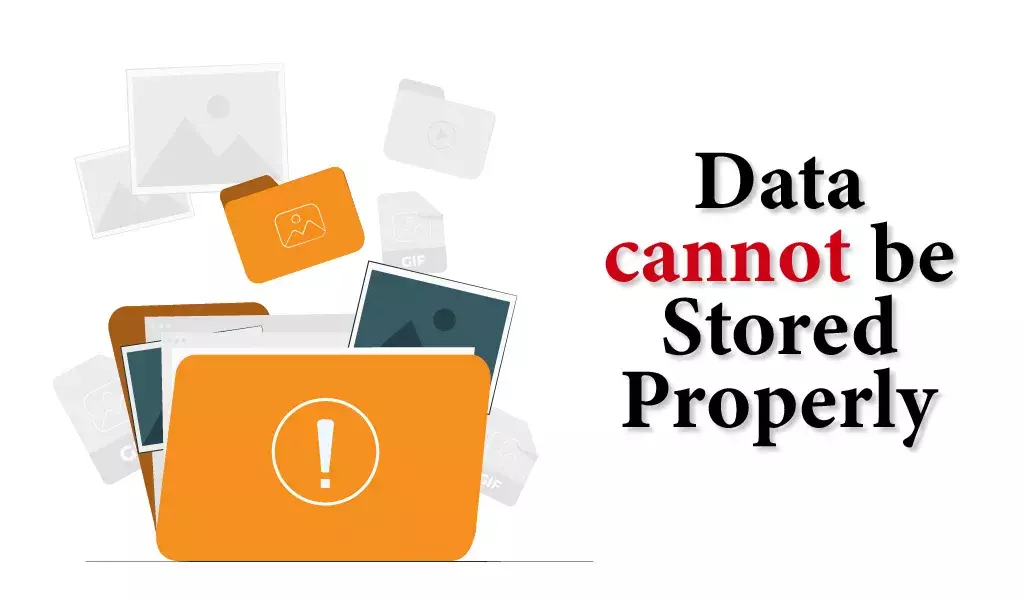Drawbacks of No-code App Development
Table of contents

The demand for software has far exceeded the supply of coders in this fast-growing world of technology. This has given rise to the use of no-code app development platforms that help several organizations escape the shortage of software developer skills. These platforms allow businesses to create software applications easily and hit the ground running while cutting down the mobile application development time from months to a week.
However, it might sound like a great idea to develop an app and use it without the need for high-priced in-house or third-party development teams but app development is a major investment for any business considering the whole truth is important. There are some disadvantages of these platforms that you should be aware of before diving into developing your app this way. But first, let us understand this term in detail.
What is No-Code app development?

As already discussed in the introduction, no-code is a tool that builds software applications without coding. It is a popular alternative to traditional software development for non-technical business owners to develop applications without actually having to write code. This, allows the people who have the necessary knowledge and understanding of the business requirements but lack the knowledge of programming languages to create a software application or add functionality to an existing site or app.
But how?
No-code basically decouples programming languages and syntax from logic. It uses a simple visual integrated development interface that allows both developers and users to create the software fast and easily by dragging and dropping components. Though there is actually plenty of coding involved, it is behind the scenes and invisible to the users. While the heavy lifting is done by the no-code tool providers to hide the complexity of what users accomplish through exercises like dragging and dropping application components by using data abstraction and encapsulation.
In this content system, you either use HTML or WYSIWYG. HTML provides you the option to design the back of the website where you can write the web text as well as give a command in code. Whereas with WYSIWYG (what you see is what you get) option you can write in more visual representation. This allows you to immediately see which changes have what effect on the end result.
This software suite consolidates basic tools required for writing and testing the software and often uses a modern-driven development approach to map out how the software system should work before the actual coding begins. Once the software is developed it can be tested using MBT (model-based testing) and then can be deployed.
However, as every technology comes with its own pros and cons, though the advantages of no-code are obvious, there are some disadvantages of this platform that you should be aware of. So, let us dive into them.
Drawbacks of no-code app development
There is no doubt about the fact that no-code development offers a wide range of benefits for businesses. Hence, it is easy to see why many businesses are drawn to it. However, there are some downsides of this platform that you must be well aware of to make a decision. After all, app development is a major investment for a business, and making a rash decision without knowing the cons will make you regret your decision. So, let us take a look at some of the drawbacks of no-code app development platforms.
Drawback No. 1: Users have less understanding of the software
Every no-code platform is distinct with a set of new features while no two platforms have some limitations. Hence, any user must first determine whether their application needs fit within the constraints of the tool they have selected to develop their app or not. This will require proper planning before you pick a platform because it must meet the requirements of your application. However, it is important to remember that even if the initial requirements are fulfilled, they will naturally change over time, and thus the risk is that you will outgrow the tools chosen in the first place. Hence, it is always good to invest in a developing book before setting out on a developing project.
Drawback No. 2: No-code app development limits what you can build
No-code development platforms usually provide various templates and components that can be personalized to meet a set of use cases according to your business processes when it comes to building out different features of an application. However, as soon as you encounter that inevitable edge case that you need to add to your application, you suddenly don’t have the building blocks to implement that specific piece of business logic required. This will not only shift your focus from what you need to build to what can you build but also force you to resort to complex and often costly workarounds. Moreover, you will only be left with a rigid piece of software even after investing heavily in making your application work to within the constraints of the no-code provider. This would have never been a problem if you would have considered building software with handwritten code as it is dynamic and in your hand.
Drawback No. 3: No code is poorly scalable
As already discussed above, the no-code solution often offers limited possibilities to integrate into a private cloud within the IT infrastructure of an organization. So, the question arises of how scalable would such a solution be if it cannot be integrated. Well, the answer is quite obvious it will not be scalable enough to have an impact on business objectives. Precisely speaking the state of the art of no-code is not yet developed far enough for business-critical applications which makes it a minimal software. With these platforms, it is quite difficult to scale because the code is generally modular and tightly integrated into the codebase.
Hence, the scalability of no code is a serious problem though it could be suitable to solve a problem in a department in an efficient manner, it has to give up some other qualities in turn.
Drawback No. 4: Security issues arise from a lack of control

No code platforms do not necessarily force you to think of security first or even observe security best practices. Hence, these applications are only best suited for businesses that don’t deal with sensitive data as this platform only offers limited control over it. Rather it will risk the security of your app because in case your no-code platform gets hacked, your application will immediately be vulnerable.
While having no control over your technology can be one thing associated with security issues, not knowing your application inside out will lead to a number of risks in itself around security and reliability. Relying on such an app to manage sensitive data without a thorough expert review could just end in a disaster. So, if security is your major concern then this app development option is not for you because security and reliability are the weakest part of no-code development. While if you still opt for no-code platforms for developing your apps, no-code platforms getting hacked or stopping their operations will be the major worrisome reason for you.
Drawback No. 5: Data cannot be stored properly

In general, applications developed with no code platforms integrate poorly or not with other systems. Thus, creating a big challenge to save data that is collected by these applications. While it will not be surprising to see the data not being saved or has not been stored in a structured way, there may also be different quality levels in the data. Hence, even though it is possible to gather insights from the data, the fact that no code makes it difficult to collect the data in the right way is a serious problem for a business that wishes to use data.
Drawback No. 6: In no-code app development you do not own your source code
Vendor lock is another great disadvantage of no-code platforms. Suppose you eventually decide to make the move away from this platform yet you are bound to quickly run into the issue of vendor lock-in where it is difficult to switch from no-code without having a drastic financial consequence. This will generally be accompanied by an inability to switch providers. Hence, any chance of properly maintaining your application in the future completely rests with your dependence on the original vendor. Even if the source is made accessible by the no-code vendors, you will be likely to discover only a black box of tangled and unmaintainable computer nonsense that lacks any clear documentation under the hood of your application. Though you can have a complete understanding of what goes in and comes out of your application, the entire implementation still remains hidden and locked. Thus, it is hard to migrate your project and database that the no-code app requires while utilizing their system.
Drawback No. 7: Apps have limited expandability and maintainability with no-code app development platforms
No-code platforms provide a limited ability for an app developer to leave comments. Moreover, as the intention of a particular interface widget might be obvious or it might not, building on such an app’s functionality or tweaking it to meet the changing business needs can become quite difficult. While it might be easy in some cases to throw the whole thing away and start a completely new project from the beginning.
Drawback No. 8: Citizen developers are not necessarily good designers or developers
No-code app development platforms usually enable users to put together user interfaces a way that suits them or however they wish. This means even people without any experience or expertise with user interface design or usability creates apps that are completely unusable and confusing. Thus, leading to the development of apps that are confusing and completely unusable. This resulting mess becomes a frustrating experience for everyone involved.
Drawback No. 9: No code does not support the development of mobile apps
There is a numerous rise in the number of mobile users now, so building applications that are easily accessible on mobile devices is a must. However, it will be hard to come up with something that is acceptable for both iOS and Android systems assuming the platform is capable of doing both, even if some no-code app platforms support developing mobile apps. So, in case you still choose to go for no-code app development platforms for creating your app it will be better to limit yourself to web applications that do not need to pass muster with the app stores and are anyway generally easier to develop.
Drawback No. 10: With no code, integration is inadequate
Every business owner does not have an updated IT infrastructure, so use a private cloud, third-party software, or custom-built in-house solutions. Oftentimes the integration of a no-code-built application with them is a very tricky job, and thus the scalability of a no-code solution is compromised. Above all this, you even do not have absolute ownership of the source code which makes it unfavorable in a long run. Hence, no code app development approach is definitely not beneficial when it comes to the changing business requirements in any situation.
Frankly speaking, there are endless options to develop a software application and each comes with its unique selling points as well as downsides. This same goes for the no-code app development platforms. Though no-code platforms may seem like a good option for organizations that wish to develop their application with ease, it has their own drawbacks that you need to consider while developing your app. However, it is highly possible in this era where technology keeps evolving at a rapid pace to develop sustainable solutions by means of no-code app development in the future.
But if you want to develop and deploy an application now, it is advisable to write real code as you must have come across the drawback and limitations of this platform until now. While there are many app development agencies out there, we would suggest you choose the best app development company depending on your needs and requirements.







